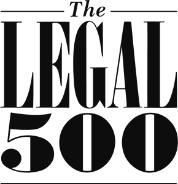In June, 2020 the Inland Revenue Department ("IRD") issued Departmental Interpretation and Practice Note 61 (“DIPN 61”) to provide guidance on its interpretation and application of the tax exemption (“Unified Funds Tax Exemption”) introduced by the Inland Revenue (Profits Tax Exemption for Funds) (Amendment) Ordinance 2019. The Unified Funds Tax Exemption removed the domicile restriction under the prior tax exemption (“Offshore Funds Tax Exemption”) for funds. However, hedge fund and private equity firms and their advisers have questioned how the Unified Funds Exemption applies to them. In this article, we take a closer look at DIPN 61 to see how open-ended fund companies (“OFCs”) and limited partnership funds (“LPFs”) may benefit from the Unified Funds Tax Exemption. If you would like to obtain more information about the Unified Funds Tax Exemption or the taxation of hedge funds or private equity funds, please contact one of our Hedge Fund, Hedge Fund Taxation, Private Equity or Private Equity Taxation lawyers.
Table of Contents
- How the Unified Funds Tax Exemption Works
- Application of Unified Funds Tax Exemption to Non-OFC Funds
- Application of Unified Funds Tax Exemption to OFC Funds
- Requirement for Specified Person or Qualified Investment Fund
- Meaning of “Fund” Under Unified Funds Tax Exemption
- No Day-to-day Control over Property Management
- Pooling of Contributions and Profits or Income
- Multi-vehicle Fund Structures
- Exclusion from “Fund”
On June 30, 2020, the Inland Revenue Department (“IRD”) issued Departmental Interpretation and Practice Notes No. 61 (“DIPN 61”). DIPN 61 clarifies the IRD interpretation of the Inland Revenue (Profits Tax Exemption for Funds) (Amendment) Ordinance 2019 (“Unified Funds Tax Exemption Ordinance”) and sets outs intended IRD practice in administering the Unified Funds Tax Exemption which came into effect on April 1, 2019.
The Unified Funds Tax Exemption
The Unified Funds Tax Exemption seeks to exempt hedge funds, including OFCs and LPFs, from Hong Kong profits tax. This exemption may apply regardless of the fund structure, location of the fund’s central management and control, fund size or fund purpose provided that prescribed conditions are satisfied.
Unlike the Offshore Funds Exemption, there is no longer a bias against Hong Kong. Firstly, there is no longer any need to artificially maintain fund management and control overseas. Secondly, the exemption permits investments into Hong Kong private businesses. Thirdly, OFCs receive exemptive relief for a wider range of investments, meaning that Hong Kong based OFCs may be exempt from Hong Kong profits tax in circumstances where traditional Cayman SPC structures may not be.
For more details on how the Unified Funds Tax Exemption changes the tax exemption position of hedge funds and private equity funds, including OFCs, please refer to our articles “Tax Law: Proposals to Relax Profits Tax Exemption for Hong Kong Managed Funds (June 19, 2018)” and “Unified Funds Tax Exemption: Relief for OFCs and Other Hedge Funds and Private Equity Funds (January 3, 2019)”.
Uncertainties under Unified Funds Tax Exemption Regime
Hedge funds and private equity funds and their advisers however, have expressed concern as to the application of Unified Funds Tax Exemption. The concern is how to interpret various statutory conditions which must be satisfied for a fund to be eligible for exemption from Hong Kong profits tax. We highlighted some of these issues in our article “Update on Discussions on the IRO Unified Funds Exemption (February 11, 2019)”
How the Unified Funds Tax Exemption Works
The new Unified Funds Tax Exemption provides an exemption from profits tax for profits derived from certain transactions to funds. Different exemptive relief is available depending on whether the fund is an OFC. No distinction is made under the Unified Funds Tax Exemption for LPFs.
Application of Unified Funds Tax Exemption to Non-OFC Funds
For funds which are not OFCs, the Unified Funds Tax Exemption exempts from profits tax profits earned from transactions (“qualifying transactions”) in securities (including shares and debentures of private companies), futures contracts, exchange traded commodities, OTC derivative contracts, foreign exchange contracts and other asset classes specified in Schedule 16C of the Inland Revenue Ordinance ("IRO") as well as transactions (“incidental transactions”) incidental to such qualifying transactions (at a maximum of 5% of the total of the fund’s trading receipts from both the qualifying transactions and the incidental transactions).
DIPN 61 clarifies that when determining whether a transaction is an incidental transaction, the IRD will look to the particular mode of operation of the fund concerned. Incidental transactions may include the custody of securities, and the receipt of interest or dividends on securities acquired through the qualifying transactions.
Application of Unified Funds Tax Exemption to OFC Funds
For OFCs, the Unified Funds Tax Exemption exempts from profits tax profits earned from transactions in all asset classes, whether or not such transactions are qualifying transactions and whether or not such transactions are incidental transactions.
Prior to September, 2020, private OFCs however, were subject to restrictions under the Code on Open-Ended Fund Companies (“OFC Code”) which restricted such OFCs to investing no more than 10% of their assets into investments outside those specified including securities and futures contracts (as defined under the Securities and Futures Ordinance (“SFO”)), cash, bank deposits, certificates of deposit, foreign currencies, foreign exchange contracts, or any combination thereof. However, in September, 2020, the SFC relaxed this restriction, with the result that private OFCs are no longer subject to investment restrictions. As a result, the Unified Funds Tax Exemption offers profits tax exemption to OFCs on profits earned from transactions in a far wider range of asset classes than is available to non-OFCs.
This is not to say that an OFC can invest in any asset and obtain profits tax exemption from profits earned as a result of such investments. As a result of a rule-in provision, no exemption is available for:
- profits from carrying on a direct trading or direct business undertakings in Hong Kong in assets that fall outside Schedule 16C of the IRO;
- income from the holding of assets that fall outside Schedule 16C of the IRO.
DIPN 61 provides that as a result of the foregoing, an OFC will not be exempt from profits tax on transactions which “relate to assets which are normally purchased and sold in the normal course of business of a commercial or industrial enterprise”. As typically only hedge funds will take the form of an OFC and hedge funds will normally deal exclusively in financial assets, it seems unlikely that a hedge fund in the form of an OFC would be subject to profits tax as a result of this rule-in.
Requirement for Specified Person or Qualified Investment Fund
The Unified Funds Tax Exemption requires that transactions must be carried out or arranged in Hong Kong by a “specified person”, that is an SFC licensed corporation or authorised financial institution registered under the SFO. Hedge funds will normally carry out or arrange transactions through an asset manager which holds an SFC Type 9 license (asset management) and thus, will meet this requirement.
However, if transactions are not carried out by a specified person, the fund may nevertheless qualify for relief under the Unified Funds Tax Exemption if it is a “qualified investment fund”. The qualified investment fund provisions are particularly important to some private equity funds, as their investment advisers may not be SFC licensed and thus, do not qualify as “specified persons”. Though there is no requirement for LPFs to appoint an investment manager which is SFC licensed, the LPF regime appears to contemplate that the general partner or the investment manager will be so licensed, thus qualifying the LPF for exemption under the Unified Funds Tax Exemption without satisfying the criteria for a qualified investment fund. We discussed the recent SFC circular in our earlier article entitled “SFC Circular to Private Equity Firms: A New Licensing Approach? (January 19, 2020)".
For completeness, the definition of a “qualified investment fund” is substantially the same as the definition of “qualifying fund” for the Offshore Funds Exemption. The criteria are available in our earlier article entitled “Tax Law: Proposals to Relax Profits Tax Exemption for Hong Kong Managed Funds (June 19, 2018)”.
Meaning of “Fund” Under Unified Funds Tax Exemption
For the purposes of qualifying for the Unified Funds Tax Exemption, the definition of “fund” mirrors that of “collective investment scheme” under the SFO. As intended, a hedge fund, whether in the form of an OFC or otherwise, and a private equity fund, whether in the form of an LPF, should have no difficulty meeting the definition.
However, as a result of the language used in the IRO to define a “fund”, a number of interpretation issues have arisen.
No Day-to-day Control over Property Management
To qualify as a fund under the Unified Funds Tax Exemption, the participating persons in the fund must not have day-to-day control over the management of the property (whether or not they have the right to be consulted on, or to give directions in respect of the management). The IRO does not define the terms “participating persons” or “day-to-day control”. Concerns may arise, for example, where some investors are related to the fund manager or have investment approval rights.
DIPN 61 clarifies that the IRD takes the position that “participating persons” refers to investors, meaning shareholders in an OFC and limited partners in an LPF. It further clarifies that the IRD takes the position that “control” refers to the control by way of rights as an investor and that even if one investor does not have day-to-day control, the arrangement could still be a fund. On this interpretation, for example, an OFC may nevertheless qualify as a “fund” for the purposes of the Unified Funds Tax Exemption even if the investment manager holds shares in the OFC as an investor. Equally, for example, an LPF with an advisory committee could nevertheless qualify as a “fund” under the Unified Funds Tax Exemption so long as the committee does not (as would normally be the case) usurp the function of the investment manager. Finally, for example, the fact that the general partner of an LPF participates in the economic returns of the LPF does not deny the LPF from qualifying as a fund under the Unified Funds Tax Exemption.
Pooling of Contributions and Profits or Income
A second condition for an arrangement to qualify as a “fund” under the Unified Funds Tax Exemption is that the capital contributions of the participating persons and the profits or income from which payment is made to them are pooled. A concern is whether this pooling condition would be satisfied if there is a single investor in a fund and when the condition must be satisfied.
In DIPN 61, the IRD takes the position that under special circumstances (e.g. where the fund is in its start-up period or winding-down period), an arrangement may be accepted as a fund even if it has one investor at a certain point in time within a year of assessment. However, an arrangement intended to have a single investor only is unlikely to satisfy the “pooling” requirement.
DIPN 61 goes on to explain that the IRD takes the position that where there are separate pools of assets, including an OFC umbrella fund with multiple sub-funds, it will consider each asset pool separately for determining whether each pool should constitute a fund for the purposes of the Unified Funds Tax Exemption. Thus, the fact that a sub-fund of an OFC does not fulfil this condition will not result in non-satisfaction of this condition for the OFC umbrella fund as a whole.
Similarly, if an asset pool has different classes of interests, the IRD indicates in DIPN 61 that it is possible that each class may be regarded as a separate fund. If the assets and liabilities of a class are segregated from the assets and liabilities of another class, the IRD may consider the different classes as different funds.
Multi-vehicle Fund Structures
Hedge funds and private equity funds may adopt multi-vehicle fund structures (including master-feeder structures and parallel funds) to accommodate the preferences of fund investors. In determining whether such funds constitute one single fund or multiple funds under the Unified Funds Tax Exemption, DIPN 61 indicates that the IRD will consider the totality of facts, in particular the constitutive documents, investment mandates and management agreements.
Where, for example, investors in parallel LPFs vote together, the constitutive documents are identical except as regards regulatory and tax matters, and the funds invest together, the IRD may view the parallel LPFs as a single fund. Similarly, for example, if there are 2 feeder funds which invest into a single master fund, each feeder being identical save that one is a blocker and one is a flow-through, the feeders and the master would likely be regarded as a single fund.
Exclusion from “Fund”
Under the IRO, certain arrangements are excluded from the meaning of a fund, including arrangements in which investors are related to the fund manager. DIPN 61 clarifies the IRD position that a fund will not cease to qualify for relief under the Unified Funds Tax Exemption merely because a fund begins a year of assessment with a single seed investment by an affiliate of the investment manager.
Restrictions on Investments in Private Companies
If a fund or a special purpose entity (“SPE”) owned by it invests in shares, stocks, debentures, loan stocks, funds, bonds or notes (“Specified Securities”) issued by a private company, additional conditions must be satisfied for the Unified Funds Tax Exemption to apply. These additional conditions are intended to reduce tax evasion opportunities through the use of funds.
Under these conditions, to be eligible for relief under the Unified Funds Tax Exemption, a fund or SPE must satisfy (i) an overarching immovable property test (10% threshold) and (ii) one of the following: holding period test, control test or short-term asset test.

Holding Period Test
The holding period test encourages a long-term focus on investments. Under the IRO, a fund or its SPE satisfies the holding period test if it disposes of the Specified Securities not less than 2 years after they are acquired.
DIPN 61 does not clarify whether, in the case of multiple acquisitions of the same Specified Securities, a single 2 year period will run from the first acquisition or a separate 2 year period will run for each acquisition.
Control Test
The control test provides that a fund or an SPE may be eligible for profits tax exemption under the Unified Funds Tax Exemption in respect of an investment in Specified Securities if the fund or SPE, as the case may be, does not have “control” over the private company which issued the Specified Securities. The IRO defines “control” as meaning, in relation to a corporation, the power of a person to secure that the affairs of the corporation are conducted in accordance with the wishes of the person, either by means of the holding of shares or the possession of voting power in or in relation to the corporation or any other corporation or by virtue of any powers conferred by the articles of association or other document regulating the corporation or any other corporation.
The IRO does not indicate any percentage level of shareholding to gain “control”. In DIPN 61, the IRD suggests that “control” normally refers to over 50% ownership interest. However, “control” is a more nuanced concept and it is possible to secure legal control without a 50% ownership interest just as it is possible not to have the ability to pass resolutions, such as special resolutions, with a 50% ownership interest.
Short-Term Asset Test
Where a fund or an SPE has control over a private company whose Specified Securities it holds, the fund or SPE may qualify for profits tax exemption under the Unified Funds Tax Exemption where the private company holds short-term assets the aggregate value of which does not exceed 50% of the value of the private company’s assets. The IRO defines “short-term assets” as being assets that fall outside of Schedule 16C, that are not immovable property in Hong Kong and that have been held by the company for less than 3 consecutive years before the date of disposal.
Indirectly Held Special Purpose Entities
Private equity funds will frequently form SPEs to hold their investments. Under the Unified Funds Tax Exemption, SPEs held by funds which themselves qualify for relief under the Unified Funds Tax Exemption may be exempt from profits tax on transactions in Specified Securities (as well as rights, options or interests in respect of such Specified Securities) issued by an investee private company or an interposed SPE.
A concern is whether a “special purpose entity” under the IRO includes an SPE which is indirectly held by a fund (e.g. the fund holds through HoldCo1 which, in turn, holds through HoldCo2 which, in turn, holds an investment). The IRO requires that the SPE must be “wholly or partially owned by a fund” but does not say whether the fund can indirectly own that interest. DIPN 61 clarifies that an “SPE indirectly owned by a fund” will qualify as an “interposed SPE”.












